(NOTE – when I refer to “fast glass” in this article, I’m referring to the maximum opening, not AF speed.)
Do we really need fast glass anymore?
After all, with all that fantastic high ISO performance we find in modern cameras, should we all just agree to relegate fast glass to the Jurassic section of the Camera History Museum? Is it time to stop spending crazy amounts of money on F/2.8 and F/4 glass and utilize less expensive F/5.6 optics instead?
Based on the frequency that I see a comment like the above or similar, I think there are more than a few photographers who think so.
As you might guess, I don’t agree.
Sure, I won’t deny that we can do things with our digital camera and those stratospheric ISOs that film photographers – or heck, even digital photographers of just a dozen years ago – would never even dare to dream about. However, high ISO isn’t exactly the rainbow-laden paradise you may think it is.
The Reality Of ISO
Let’s start with a look at what ISO really is – and no, it doesn’t make your camera’s sensor more sensitive to light (although nearly every article on exposure will make that claim). While we do sort of use it as a sensitivity adjustment, it’s actually signal amplification – that “signal” being light.
In 99% of the cases, your sensor only has one sensitivity – and that’s base ISO. That means even if you crank up your ISO to 6400, 12800, or beyond, the sensor is still capturing the same amount of light as if you were shooting ISO 100 at your current shutter speed and F/stop. When you increase your ISO, the camera is just amplifying the electrical signal (from the captured light) to increase the image brightness – the sensor is not becoming more “sensitive” to light.
In short, ISO works like a volume knob for brightness.
For example, imagine you’re at the edge of town jamming to an old Journey song and the signal starts to fade. If you turn up the volume, the signal doesn’t get stronger, does it? You only amplify what’s already there – and as you make the music louder, the static (noise) goes up right along with it.
However, what happens if you install a more powerful antenna? That’s right, you can “collect” more of the signal and you get music with less static. That’s what fast glass does with light. It allows you to “collect” a stronger signal so you need less ISO amplification – and you end up with more information coming to the sensor.
(A couple of notes. First, my upcoming exposure book will go over this in much greater detail than we have space for here. Second, and technically, ISO amplification is more analogous with gain and not volume since gain is an input amplification and volume is output amplification. However, I think volume is easier to relate to and works for our general purpose here.)
So, with ISO outed as not being a “real” exposure control, that leaves us with just two ways of feeding our sensor more light – we can either open our lens to a wider aperture or employ a slower shutter speed.
Depending on your subject, a slower lens with a slower shutter speed might be all you need. When I do landscape work, I routinely shoot at F/11, ISO 100, and simply live with longer shutter speeds. Heck, sometimes I need those longer speeds to create the effect I want (like with silky waterfalls for instance). In cases like that, the maximum opening of the lens is of little consequence to me.
In the photo below, I wanted a slow shutter speed to give the water a “silky” look, so my maximum lens opening didn’t really come into play.
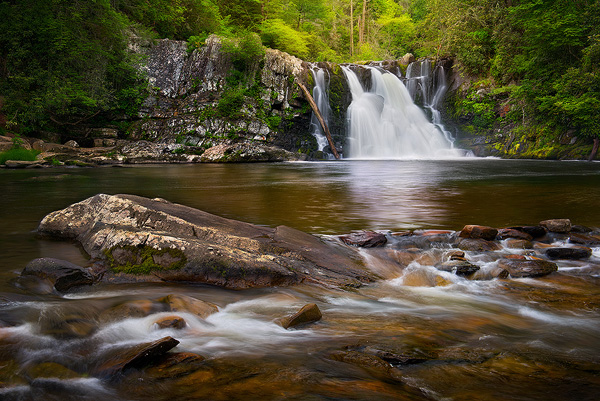
Sadly, the same doesn’t apply to action photography. For shooters who need to maintain fast, action-stopping shutter speeds, the practical upshot of all this is that you only have ONE choice to get more light to your sensor – use faster glass. Like horsepower in cars, there’s simply no substitute.
Of course, knowing the truth about ISO may not be enough to sway you over to the fast glass camp. After all, if you can live with ISO 6400 on your camera, the ability to shoot a stop or two less ISO still may not seem worth the extra financial penalty that faster glass exacts on your checking account.
The thing is, as ISO increases, it’s not just about the extra noise.
As your ISO climbs, your dynamic range drops like an angry hammer on a nail. Roughly speaking, for every stop of ISO you add, you sacrifice a stop of dynamic range. This directly impacts your ability to recover highlights and shadows in your images.
For example, say you and I were sitting side by side photographing an elk at dusk. You have a 400mm F/2.8 and I’m using my 300mm PF + 1.4TC, so I’m shooting F/5.6. You have a two stop advantage. I’m at ISO 6400, and you’re at ISO 1600.
At first, our images appear similar; mine simply exhibits more noise. However, that’s before we try making some adjustments in Lightroom.
We’ll say that maybe the shadow area of the elk is a little too dark (as it’s apt to be much of the time with elk). At ISO 1600, you have roughly two more stops of dynamic range than I did at ISO 6400 and when you try to pull your shadows up, it works. When I try, my shadow areas turn into a gritty, detailless soup – I just don’t have the dynamic range I need in those shadows anymore.
The thing is, when you pull up shadow areas, you are effectively increasing the ISO in that local area. If you shoot an image at ISO 6400 but need to pull up the shadow areas by a couple of stops, those shadow areas are going to look like they were shot at ISO 25,600! When you try that same trick at ISO 1600, they look like they were shot at 6400. Sure, not ideal, but way better than 25,600!! (It doesn’t always work exactly like that, depending on how the camera’s A/D converter is set up, but it’s close enough for the example.)
Although this one didn’t need two stops of shadow pulling, I was still happy I was able to shoot at F/4 and get my ISO down to 1600 for this shot. I did have to pull the shadows a bit and it held together really well.
The same applies to highlight clipping as well. Lower ISOs give you a much better chance at retaining detail in bright highlights than higher ISOs do. Saving highlights can be especially critical when you’re trying to salvage white feather detail (all of my fellow white egret photographers understand this dilemma).
In fact, for much of my nature photography work, I’m actually more concerned about total dynamic range than noise, so this is not something to take lightly.
And it doesn’t end there either!
As ISO increases, color fidelity also drops. Some cameras are better at retaining color at higher ISOs than others, but it’s still a concern no matter what you shoot.
So the bottom line is simply this – the less ISO you need (i.e. the less you need to amplify the signal), the better the overall quality of the image. There are real, tangible benefits that go above and beyond just having “less noise” in your images when shooting faster glass.
Other Benefits
Of course, it’s not all about dropping ISO either – there are other advantages with faster glass as well. We’ll go over a partial list here.
1. Better Subject Isolation
The first and probably most obvious benefit to strapping on faster glass is better subject isolation. One glance at my wildlife gallery and you’ll see I’m a raving fan. I love shooting my 600mm F/4 wide open and do so whenever I can. I use subject isolation as a key component in my photos. Sure, I also have Photoshop techniques that can help, but there’s no substitute for getting it right in-camera with a fast lens. The three images below are all shot up-close and wide open at F/4 – and I love the way the background renders.
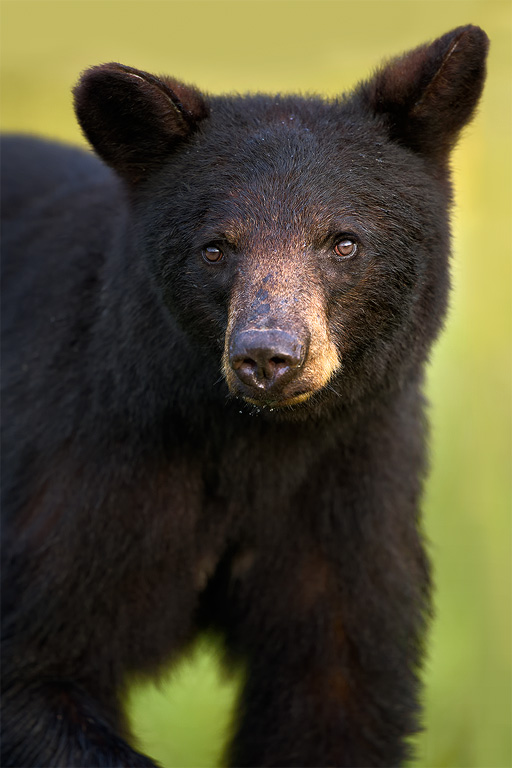
In fact, one of the primary reasons I spend so much time daydreaming about a 400mm F/2.8 is not as much about that extra stop of ISO or shutter speed gained over my F/4 glass – it’s all about shooting at F/2.8 and isolating my subjects against backgrounds creamy enough to make the latte baristas over at Starbucks jealous.
2. Better Build Quality
The other factor that, in my opinion, is too easily dismissed by fast glass naysayers is that faster lenses are generally better built than their slower counterparts. Just compare one of Nikon’s or Canon’s big primes or F/2.8 zooms to their F/5.6 equivalents. The F/5.6 lenses are of good quality, but the faster optics really do take it up a notch or two.
In many cases, the F/4 and F/2.8 lenses have faster AF motors, add more features, and employ more robust weather sealing than their less expensive F/5.6 siblings. Again, this may seem only a minor advantage, but every single one of the benefits I listed comes into play on a regular basis for me.
3. Better Autofocus Performance
Not only do the faster lenses tend to feature super-fast AF motors, but a faster lens is also easier for the camera to focus in low contrast, dim light. You know, the kind of conditions wildlife photographers confront on a daily basis. I certainly have more misses in those conditions when I’m using an F/5.6 or F/8 lens (F/8 coming from a TC + F/5.6 lens combo) than when my maximum opening is at F/4 or F/2.8.
4. Better Teleconverter Performance
Another enormous plus for a fast lens is that it will typically take teleconverters better than a slower counterpart would – in fact, there are a couple of facets to this.
The first is that I’m generally more willing to give up some light to a teleconverter if the lens I’m using is already starting at F/4 or F/2.8. However, when the lens starts at F/5.6, adding a 1.4TC drops the F/stop to F/8. For me, that’s taking it too far. I’m often in dim light and I struggle enough when using F/5.6, so F/8 would seldom work well for me.
For this grizzly photo, a teleconverter kept me at a safe distance and since it only dropped me to F/5.6 I still had enough shutter speed to get the shot.
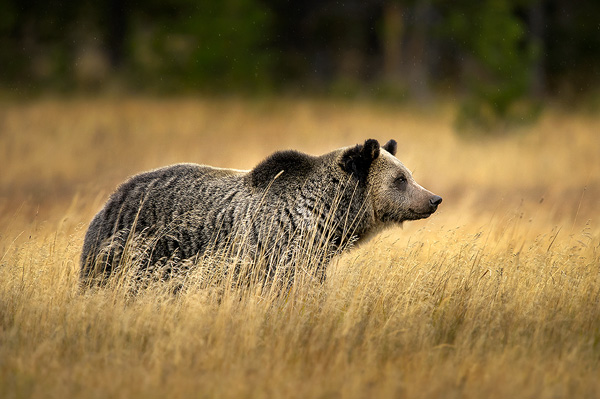
The second facet is that AF speed and performance suffers far less if the TC only drops you to F/4 or F/5.6. When you drop to F/8 due to a TC, your outer AF sensors become far less reliable. At the same time, anytime you add a TC, your AF speed drops. When AF speed is already fast (as is the case with many F/2.8 and F/4 lenses), this isn’t a big hit, but if the AF speed starts at something that’s better categorized as “moderate” (like with the 200-500mm), adding a TC can make it unusable for many situations.
5. Better Viewfinder Visibility
Viewfinder visibility is another often overlooked benefit of faster glass. When you look through an F/2.8 or F/4 optic, you’ll discover your viewfinder is noticeably brighter than when using a lens featuring an F/5.6 or slower F/stop. The faster glass lets in more light, making it far easier in dim situations to gauge everything unfolding in the viewfinder.
In fact, one of the most significant benefits is that – at least for me – it’s far easier for me to visually confirm if the camera is nailing focus or not when I’m using faster glass – and that brighter viewfinder is directly responsible. With slower glass, it’s more difficult for me to tell. Sure, there’s the focus confirmation dot, but I want to make sure the camera isn’t just achieving proper focus, but achieving proper focus exactly where I want it on the subject. Faster glass makes it easier for me to verify I have what I want.
6. Better Wide-Open Shooting
The last point I’ll make is simply this. Quite ironically, it turns out we often find that faster glass performs better wide open than slower glass. The thing is, when a manufacturer produces a fast optic, they realize that the reason people risk divorce over the purchase is that they want to shoot it wide open. So, most manufacturers optimize fast glass for wide-open performance. Sure, sometimes these optics improve a little when stopped down, but they often start off better than many slower lenses.
On the other hand, slower glass is usually best when stopped down a bit, depending on the optic. So, if you have a lens that’s F/5.6 wide open, but you have to stop down to F/8 to really get the most from it, that’s a pretty hefty price to pay in my opinion. (Note – this doesn’t apply to all lenses – for example, my 200-500mm is perfectly sharp wide open.)
I’m Not Trying To Make You Feel Bad Or Angry!
Now, all that said, I did NOT write this article to make everyone out there shooting F/5.6 glass feel bad about their purchase or incite anger in my readership. (You don’t come here for the sugar-coating, do you?) I’ve seen countless shots all over the web that I’d love to have on my website that were done with the 80-400mm or the 200-500mm, so don’t feel like you can’t get incredible imagery.
In fact, here are a couple I like that came out of my 80-400:
The reason for this article is simply to dispel the idea that fast glass is useless now due to ever-improving ISO performance with our modern cameras. I wanted to make the point that it still has a place and should not be easily dismissed if it’s an option for you.
~Steve
PS…
If you enjoyed this post, I think you’ll REALLY like my e-books, Secrets To Stunning Wildlife Photography and Secrets To The Nikon Autofocus System. They’re filled with hundreds of pages of information just like this. Check ’em out – click here (hey, it’s free to look 🙂 )

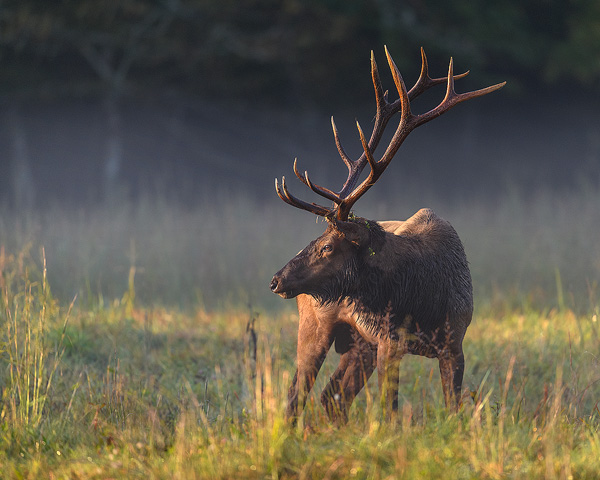
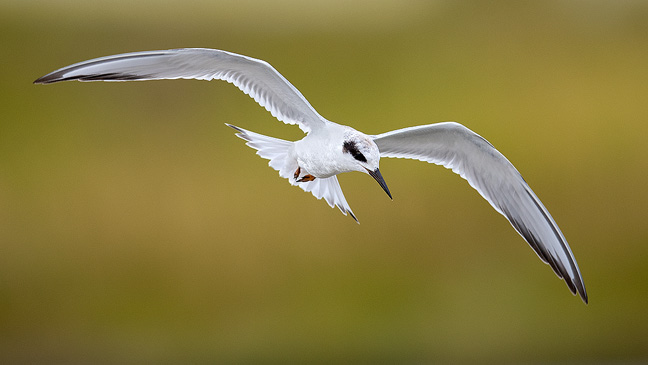
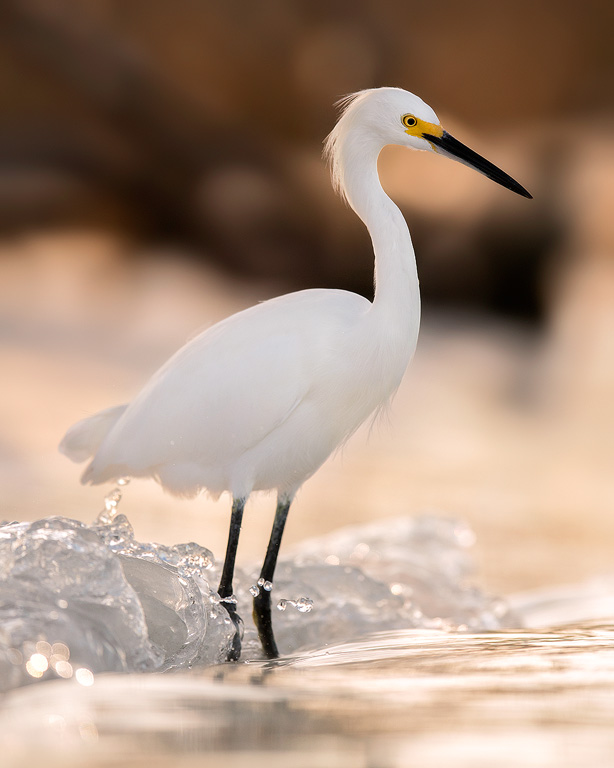
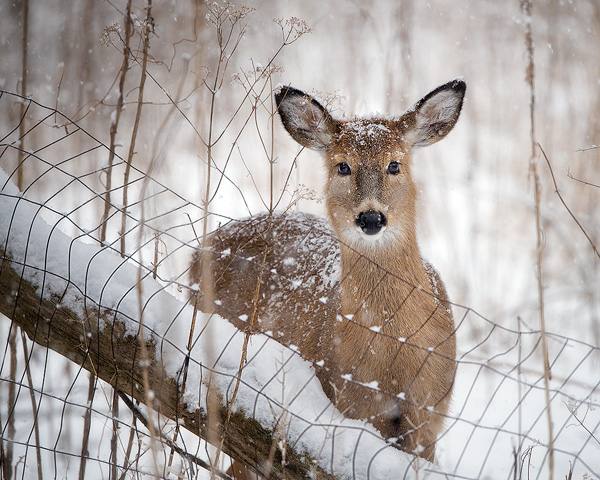
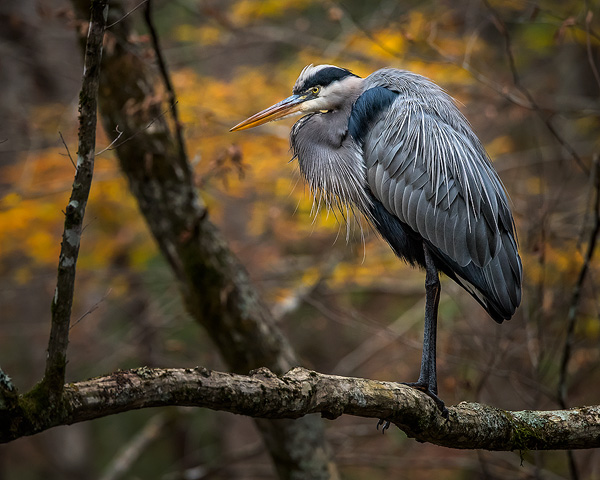
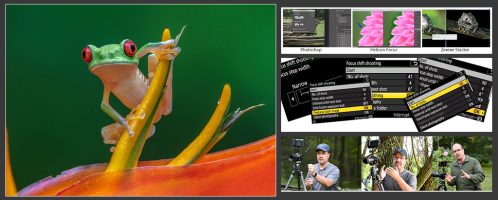
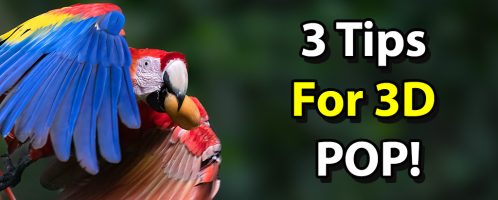
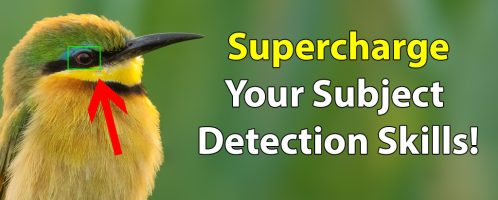
Great article! Is it also nice to get the whole bird feathers and eyes or bear and cubs in focus, and this not normally possible with 2.8 whereas at 5.6 it’s more likely.
fast glass is great but dont we need to weigh up when its prefered and when its not?
not to mention the $ outlay. be all that as it may its great to read your articles keep them up please!!
That’s why I also carry a 300 PF and 500PF. There are times I’m out and just don’t need the big guns. The smaller lenses are also much easier to manage and maneuver and I’ve nailed shots with the 500PF and 300PF that I never would have been able to manage with a tripod-mounted 600mm. Still, 80% + of my shots are with the 600mm. There’s never a one-size only answer 😀
Hi Steve. Please can you brake down the meaning of “fast glass” for us?. I know is referring to lenses capable of wide open apertures but I don’t get what is the etymology of that phrase. Thanks from Ecuador!
Hello Steve. Thanks for this great article and reviews. Maybe you can help me with your opinion. For (mostly) bird photography I use Sigma 500mm 4.5 EX DG with Nikon D300, and I like to take it with me during bird surveys, on vacation etc. (but sometimes this is difficult because on many occasions I also carry a telescope+tripod with me..). For about 2 years already, I’m struggling what to choose as new gear for about (max.) the same dimensions and weight (preferably not more than 3,3 kg) for up to 6.500€ but preferably less than 5.500€ for a new… Read more »
This is interesting because I am currently looking for an affordable longer focal length lens to use with my Nikon D810. The 200-500mm has been on my mind for a while. I have read some reviews, comparisons with other lenses [Sigma 150-600mm Contemporary and sport, Nikon 80-400mm]. According to one, the 200-500mm beats all those except the Sigma Sport. [Which I had already noted as having qualities/specifications that would make it better.] But my hesitation has been hard to define until reading your article. I realized I was worried about the f/5.6 maximum aperture. Still considering the 200-500mm as the… Read more »
Hi Steve. I have become a fan of your tutorials and I am learning a lot. I am a photographer and never really “Specialized” in any area of photography, although Landscape is really where I spend a lot of time today…I just love photography and have been shooting for over 40 years. So, coming to your site is treat, as I want to learn to become a better wildlife photographer. I really appreciate the time your spend in the details of the Why and How. You are a great instructor and I look forward to more of your work and… Read more »
Steve. I’m a big fan and have talked to you about cameras in email but I had a question on this subject. “For mammal wildlife” would you consider a micro 4/3 such as Panasonic G9 as a good option with the in body image stabilizer and a 100-400 Panasonic Leica (which comes out to 200-800) that is image stabilized as well. This could allow me very good reach at an effective 800mm and shoot mammals at 125/ of a second. (From the reviews it seems that the dual image stabilization can go much lower in Shutter speeds) Just curious how… Read more »
Thanks for the kind words. In my opinion, no, the system you’re looking at isn’t ideal. Can it work – of course, but there are serious drawbacks. First, ISO is a problem compared to a full frame camera. The truth is, a full frame camera probably has 2 stops of ISO on the M3/4 camera and a DX probably has about 1 stop. So, even if you need higher ISO, it’s a wash. Also, 1/125th may be OK with the right stabilization on your end, but I often find shutter speeds like that are troublesome for wildlife since it doesn’t… Read more »
Thank you Steve. I always appreciate your response. It has made me think twice about this system. I am compiling a checklist of things I need from a system. Hard to get everything but I think its important to check as many boxes as possible. Right now it is between the X-T2, back to the D500, or the Panasonic. Had Nikon for a while but the 200-500 I got had issues and was issued a refund. A little worried about buying one again.
Just a thought – I’m currently working on my review of the 500 PF. I know it’s pricy compared ot the 200-500, but I’m already confident in recommending it. Very sharp, good VR, superb handling. Paired with a D500 or even something like an “affordable” FX body like the D750 (or a nice, used D810) it would be a killer combo.
Which would you choose Steve, a new D750 or a nice condition used D810? Seems like the D810 is a little more versatile.
Both are good cameras, no question, but I personally like the D810 better than the D750.
My problem with the D500 was it was overkill for photographing the animals I am interested in capturing. (Non BIF wildlife)
Overkill on price to be more clear.
Steve, Thanks for the article…I do sincerely appreciate the no sugar coating approach to your topics!! I just spent a weekend with the new Nikon 500mm PF in Redfish, ID…this lens may complicate the discussion a bit. This lens is a fixed f5.6 but its a stunner!! Smaller and lighter than the current 200-500mm f5.6 which I shoot on a regular basis…focus is nearly instantaneous with either my D500 or D850 bodies and image sharpness will equal the best of any of the big primes!! (I have previously owned and extensively shot with the Canon Pro bodies & 600mm f4… Read more »
Very good artiche also from a technical point of view. It let me reflect about Loss of dynamic that i didn’ t thought about.
One way to enjoy these expensive lenses is to rent them when you need one. Not as convenient as owning one but you also don’t get locked into the technology as the lenses become better just rent the latest version.
I have been using the 180-400 with the 1.4X onboard extended. I really like the lens and the weight helps me to steady the lens. I must agree that fast glass relative to lens mm is worth the extra expense. I have your ebooks and am still not used to, “no pages!” I have not yet mastered a technique allowing me to flip back and forth through an ebook. Enjoy your commentaries.
I would not be without my 600 f/4…….well, maybe I’d exchange it for a 400 f/2.8 with a 1.4x converter
Hi Steve, Great article as always. I think I’ll add a notion I have. I went from a D800 to D850 while using the same lens, Tamron 150-600 G2 and noticed a huge increase in keepers. Same technique, same locations, same birds, just different camera. I figured this would happen and based my assumption on the improved AF capabilities-processor. I wasn’t basing it at all on ISO, like you say, that doesn’t help focus at all. So I think camera body AF has a lot to do with it as well. I’m looking to going from the 150-600 to the… Read more »
Thank you for this article. Great information. Waiting for New article.I bought your e-book on Nikon Auto focus. It helped me to learn.
Steve I always enjoy reading your articles. Such great information. I bought your Nikon Auto Focus and have learned so much. Keep the articles coming.
Thank you for this article, really interesting as always! Your ebook is really great too!
Great article! I am about halfway through your Secrets to Stunning Wildlife Photography, and I am learning so much!! The book is presented in such a “user friendly” way and is so easy to understand. This article has given me an understanding of ISO and increased my understanding of stopping down….which for some reason has been very confusing to me. Your way of writing, including your humor, is wonderful!
Another great article Steve!! Keep em coming!! Love your humor and your quirky 1 liners, very refreshing!!
Fantastic article Steve. I love your photography style and writing style. Quick question, I watched some where in youtube that prime glass reneder imgaes more three dimensional (so to speak) than zoom lenses as there is lsee glass. what are your thoughts on this?
Again love your work and articles. Much less videos though..
That’s tough to quantify. It may be due to the shallower DoF, or the slightly better contrast that the big, fast primes generally have over the zooms.
You’ve converted me…now I just need to win the lottery so I can afford something better than. the slow glass I’m currently using! I must add that the more I read your stuff the more you remind me of my old hero Galen Rowell. You exhibit the same endless curiousity and devotion to truly understanding all aspects of photography as he did. I find myself wondering if you are an expert mountaineer as well? If not it’s never too late to start!
Thanks for the kind words 🙂 Oh, I’m no mountaineer. My lack of coordination combined with mountain climbing would shorten my lifespan considerably!
Really great description of how higher digital ISO works. Could you explain what the Low ISO settings are doing and whether you’d want to use them? (particularly wondering if you could avoid using a ND filter by using the low ISO settings).
As usual, very clear and instructive. Thank you again for sharing those precious informations.
I learned a lot from this article. Thank you. I will have to stop saying iso is about light sensitivity. Oops. I shoot a lot of raptors, D850 with a 400 2.8e fl. Wide open or at worst two thirds of a stop up. When I was shooting my 150-600 I was stuck on ƒ8, 1/2500th. Now I am free. I watched one of your videos where you told people not to be afraid to shoot at 1/3200 or higher for birds in flight with the lens when shooting wide open. You were so right.
Great article. I love your sense of humor.
Thanks Steve, another excellent read!
As a continuation of the article; what is your thinking about the rumoured Nikon 600mm f5.6 (?) Fresnel lens?
I think it’s still an F/5.6 lens and that everything in the article above applies. 🙂 If you need a less expensive alternative to the 600 F4 or lighter weight, sure, it’ll be great. However, that missing stop is still, well, missing.
BTW – Nikon just announced development of the 500 PF as well.
There may also be 600mm and 400mm PFs both 5.6 to join the just announced 500mm PF.
https://nikonrumors.com/2018/02/01/the-latest-nikon-patents-400mm-500mm-and-600mm-f-5-6-phase-fresnel-pf-lenses.aspx/
But as Steve points out – they’re still f/5.6
And their price is TBA.
Just when I thought I was out, Steve pulls me back in. LOL. Yet another great article, sir. I’ve owned my share of fast glass in the past, Canon 600mm II, 500mm II, but tired of the weight and commitment to haul it around as strictly a hobbyist. For my purposes, the 200-500 is a great lens and all I need. I think many others feel the same way as in the past few years it has become increasingly difficult to sell the big primes used on forums. Prices have dropped like the angry hammer. And not an auction hammer… Read more »
if you stopdown the len what does it matter what appeture it has , at f8 all the lens get the same amount of light at the moment of the shoot , a faster lens get better light to help focus
While you don’t get the ISO / speed advantage when stopping down, you still get a brighter viewfinder (why I use 2.8 glass for my landscape work), better build quietly faster AF, etc.
BTW – I do stop my lenses down from wide open as needed. 🙂
If you do stop down to, say f16, to get a deeper depth-of-field, that stop down usually only occurs during the micro second that the actual photo is being taken, so if you are using AF, the camera still has all that good, bright light to focus with and your AF will be more accurate. If you are doing MF then the same applies. You have a brighter image with which to use for your focusing and it will be easier for you to get that “tack sharp” look. Yes, f16 will help you get that “tack sharp” image anyway,… Read more »
Well rounded article as usual, but I think ISO is a bit more complicated – especially if you go into crop sensors or smaller. I know from my own cameras, that my M43 cameras get super noisy if I need to do longer exposures even at base ISO – much more than if I shoot at higher ISO. And then there is ISO invariance in many cameras for a good range. I found this article to cover all parts of the signal -> image pretty well and explains also when it’s better to raise it. https://photographylife.com/iso-invariance-explained
Hi Frank –
I agree – ISO is a LOT more complex than what I have explained in the article. I have a long chapter about it in my upcoming book, including things like ISO invariance etc. The focus of this article was to point out why fast glass still has a place, not to cover every aspect of ISO 🙂
This is the best explanation of “ISO” that I have ever read. I sprung for “fast glass” on everyone of my lenses. The more expensive lenses (I use Canon “L” series lenses) last longer and will put up with more abuse, AND you can usually find good used ones or refurbished ones at a bit lower price.
Great article and supporting information on the reasons why quality glass is still needed in the Industry and as they say “invest in the glass.”
Excellent Article!!! Steve as always, I read and own your both previous ebooks. Fact is that those ebooks not only helped on wildlife but it helped lot on improving overall shooting style and techniques, please tell us when Nikon Exposure one is getting published, can not wait anymore. Thanks in advance. Sure agreed fast glass is really important and as you guided if we don’t have much money at least invest in 300 PF F4. That was really great advice I found while watching your Youtube video on caparison between 300 PF F4 vs 200-500 F5.6, I own both but… Read more »
I think I’m going to announce an approximate date for the exposure ebook in the next newsletter, but at this point, it’s probably going to be late this year. I was hoping / planning for summer, but taking the really technical aspects exposure and boiling it down is proving much more difficult than I had anticipated.
I think it’s better to do it right than rush, I expect more from Steve as all of his book are levels above most of the book on the market. Please take your time so we can get the quality of all of your other book.
Excellent article, Steve.
The other thing that I’d add (and this happens with every software package I use) is that when de-noising RAWs, my images soften at 100% viewing directly in proportion to the amount of cleaning I need to do. If the noise is fairly low to start with, it’s perfectly fine… but those higher ISO’s (on both my D750 and D850) can become frustrating when I need to crop a shot. That’s another reason while having fast glass to lower ISO is really valuable. 🙂
Excellent article Steve
Thanks Steve great article. My case for fast glass. I have shooting hummingbirds for the past week using my d500 and d750 with tamron 100-400 and 150-600 G2. From my location to fill the frame all shots were at 300mm. Wide open f5s to 6s. And Steve’s rule from his book “shutter speed is your best friend” shutter speed 1/4000. The speed produced very good head eye and feather detail with still some motion in the wings. Light was good. Background was fir trees about 30 yards. I tried different metering but matrix looked the best. I shot about 2200… Read more »
I think the 300 2.8 isn’t a bad choice at all and a good way to get into “serious” fast glass. It takes both the 1.4 and 1.7 TCs well too, so it’s pretty versatile.
The 300 PF is a little different IMO. For me, the F/4 is a good feature, but what really keeps me coming back is the size /weight – it’s just so good when you need a small, fast, optic with good reach.
Not sure I understand the loss of dynamic range as ISO goes higher. Let’s say the image sensor has pixel intensities ranging from 2 to 10. Amplifying these pixels should result in a constant amplification factor being applied to each pixel value and therefore should result in the same dynamic range. I agree that the introduction of “noise” will affect the final photo quality but the dynamic range should stay the same. The other factors that you point out are right on. However, my concern these days is that except for more serious photographers like those viewing this article most… Read more »
It’s because of the noise floor. Dynamic range is all about acceptable levels of detail in the highlight and shadow areas. As you amplify the signal, you also amplify the noise. As the noise levels go up, it renders more and more shadow detail unacceptable as it does so (raises the noise floor). As you lose acceptable shadow detail, that effectively clips your DR.
Would like to discuss this further off-line. Contact me if interested.
Thanks for addressing a muddy principle (for me) and making it clear and usable in my photography. I can’t decide if you are better at photography or teaching! Well done.
Steve this is an excellent article – I currently have some work experience students with me and they will all be reading this article – clear and concise – looking forward to your upcoming book on this subject.
Excellent article. There is no doubt that the faster glass is always the better solution but – it’s all down to affordability in the end. I’d love a Nikon 500mm prime F4 but – bottom line – I cannot afford it. So my Sigma 150-600mm Sport lens and F6.3 is what I have to make the best of. Until that is – I win the Lottery.
And there’s nothing wrong with that – that lens will produce incredible results. 🙂
Thank you Steve for adding clarity to the fast glass and ISO topics. Fast glass at least with current technology obviously seems the better solution from an image quality viewpoint. However no doubt we’ll see greater/faster advances in high ISO quality/performance. The current economics of fast glass especially super-telephoto so desirable for wildlife leaves many with no/few choices except slower glass and/or higher ISO. For professional wildlife photographers who can depreciate the cost of fast glass as a business expense the decision is somewhat more easily justified if they have a viable business model. New 400-600mm f/2.8/4’s at 8-10x $$… Read more »
I agree. The article is simply to point out the benefits and the “whys” of fast glass – it’s up to the reader to decide if it’s worth the extra cash – and weight – or not. 🙂
Fast glass is exactly what’s needed. Not higher ISO. Noise is noise, no matter how much lightroom or other process you use. Want sharp photos in dim light? Fast glass is the answer. And just like film, the lower the ISO, the sharper and more defined your photos will be.
68 year old eyes really prefer faster lens even if we don’t like luging them around!
Steve, I love the way you explain things. The car radio analogy was perfect. Am enjoying the Secrets To The Nikon Autofocus System. Hope to have my Nikon D500 prepped for a Kenya trip in July.
Steve,
Great and thorough article. I had such an experience when photographing birds at dawn in Sri Lanka in Januari with my 300PF and 1.4 TC. Photo had high ISO and noise at 5.6 and high shutter speed. I managed to reduce the noise with Topaz denoise (great package) and in this case the reduced dynamic range was less of a problem for me.
Thanks for the insight and waiting for your book on exposure.
Thanks Steve – nicely done article, as others have stated I did not know that the ISO had such an impact on dynamic range. Explains why while editing some of my images shot with a Nikon 200-500 from a recent trip to Yellowstone to fix shadow issues were not that great – loss of detail and washed out looking on the higher ISO ones.
Really useful article, clearly explained, thanks Steve
Couldnt agree more Steve, a mediocre camera with good fast glass is better than a D850 with slow glass
Thanks for an illuminating discussion. I’m going to McNeil River at the end of the month for some brown bear photography and was not certain whether to bring my Nikon 400mm 2.8 or my lighter Sigma 150-600mm. I’m no longer plagued by uncertainty. I appreciate your thoughtful, comprehensive breakdown- it’s been both timely and very helpful.
I would take both on an awesome trip like that, even if the 150-600 stays in the truck fir a backup
I agree!
That would be ideal, Rodney, but I fly by small plane to McNeil River and weight considerations preclude bringing both lenses.
Thank you for posting this great and useful article. I struggle with ISO as other wildlife photographers. This article is well written with helpful comparisons that make sense. I always look for any new articles and subscribe to your youtube. Keep them coming, Steve!
Thank you for this well written concise presentation. You addressed, and answered, many concern that I have had. Though some problems that I’ve had using slower glass, and may I add micro 3/4 cameras, are because of the user, others, that you’ve pointed out out are inherent to the system. Like many tools, one must use the right one for a particular situation. Using a f5.6 or slower lens and in my experience a micro 3/4 camera, in the morning, in the evenings, or at a poorly lit gymnasium or field is not going to yield the same quality as… Read more »
Some cameras are now coming with two native or base iso. In these cameras the dr loss seems would reset, and I see more of this coming on modern cameras. Great article, just see things changing.
Very good point. The dynamic range is more important. Noise is easy to reduce with a software. The marketing guys try to explain that 200-500 is more versatile lens than 500 prime. And so cheap. Beware.